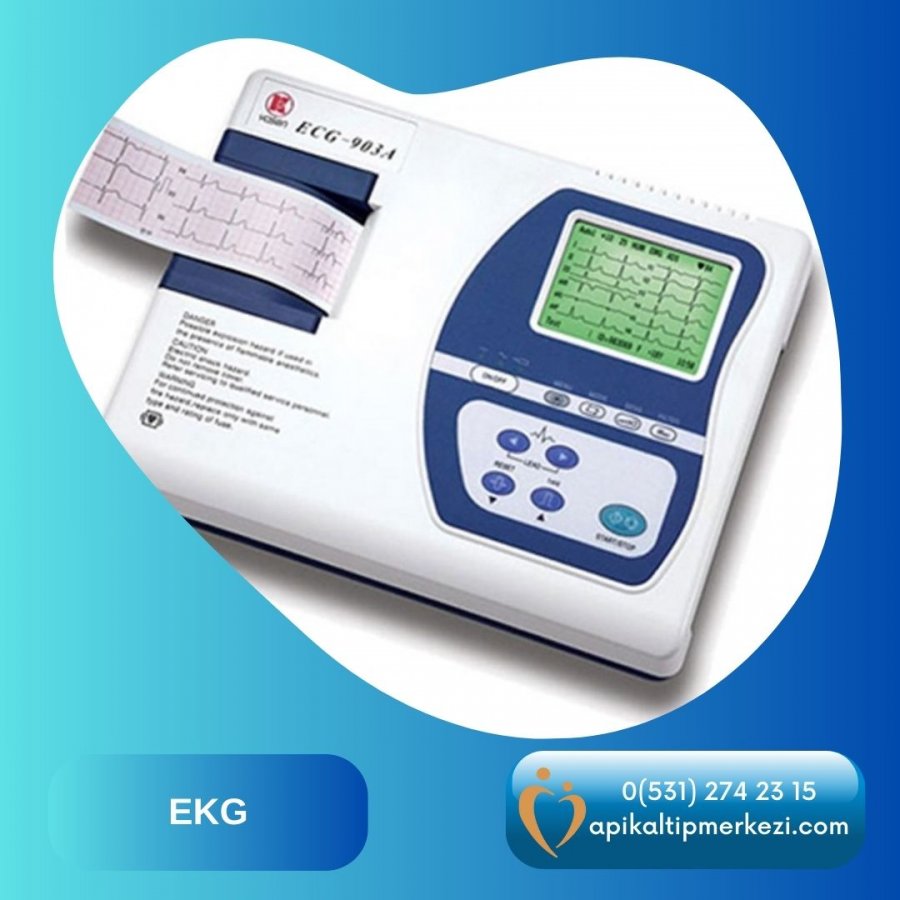EKG
What is an ECG?
It is a device that graphically records the electrical activity of the
heart (heart rhythm, frequency, rhythm of heartbeats, propagation and
disappearance of the reaction) by means of electrodes attached to the skin.
Electrocardiography (ECG) is an examination method based on printing on
millimeter paper the phases of contraction and relaxation of the atria and
ventricles of the heart, the electrical activity that occurs during stimulation
and conduction of the heart. It is a picture of the electrical map of the
heart. ECG can also provide information about the shape of the heart. The
recordings of the ECG device are called electrocardiograms.
What is an ECG used for?
- Electrocardiography is one of the most important methods used to assess
the function of the heart. It directly shows the way the heart muscle
contracts.
- The ECG can be used to detect rhythm and conduction disorders of the
heart.
- Coronary insufficiency or infarction can be diagnosed.
- Signs of thickening of the heart walls and enlargement of the heart
cavities can be detected.
- The function of the electronic pacemaker can be evaluated.
- Effects of certain cardiac medications, electrolyte imbalance (especially
serum potassium deficiency or excess)
- The effects of non-cardiac diseases on the heart can be investigated.
ECG is an examination method that takes an average of 5-10 minutes.
How is an ECG Test Performed?
The ECG device can be easily carried everywhere, so the test can be
performed anywhere. The patient does not need to be specially prepared for ECG.
It is not a painful or uncomfortable procedure for the patient. During the ECG,
the patient lies on his/her back on the examination table or in bed. Jewelry on
the patient's neck, arms and wrists should be removed. The patient's upper
back, wrists and ankles should be opened. If socks are present, they should be
removed or peeled off to expose the wrists. Electrode disks are placed on the
arms, legs and anterior chest. Special ECG gel or alcoholized cotton wool can
be applied between the skin and the electrodes for better recording.
The patient should not move or talk during the scan. ECG is usually
performed within 5-10 minutes. It is completely painless. The electrodes or
conductive gel may feel cold when first used. Redness or mild pain may be felt
where the electrodes are placed.
There are no risks associated with ECG. This is a completely safe test. The
device records the electrical activity of the heart. No electrical impulse is
sent from the device to the patient.

